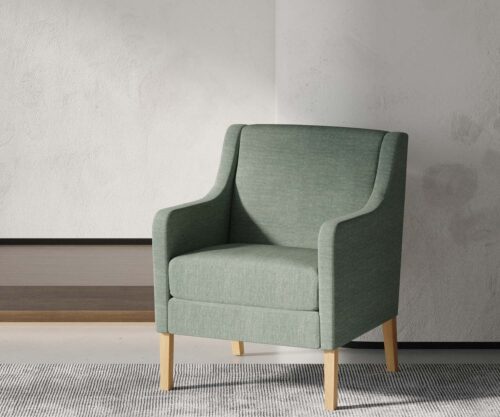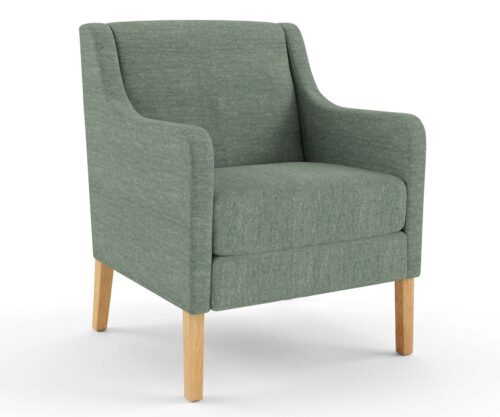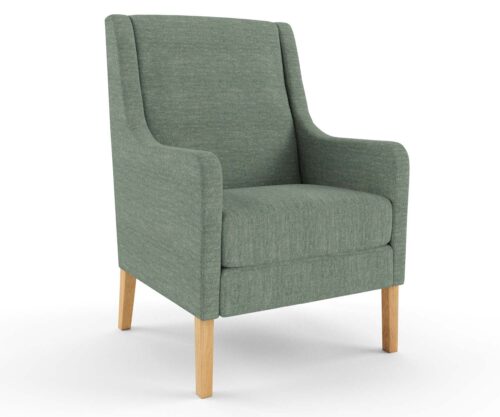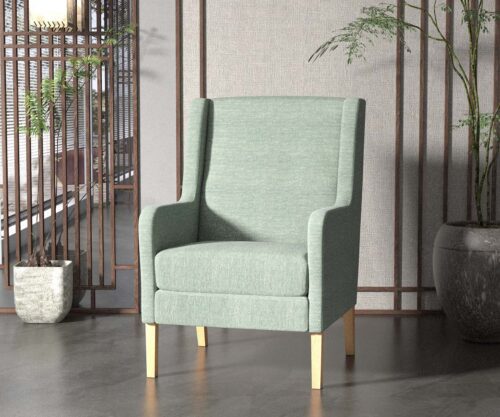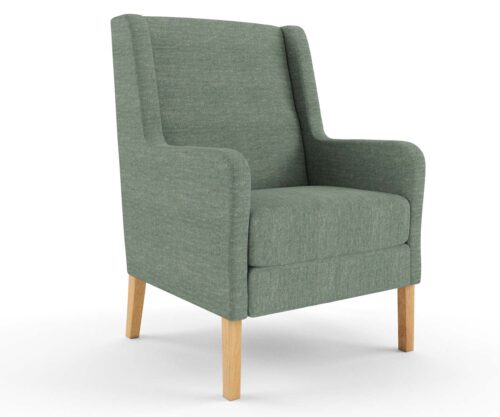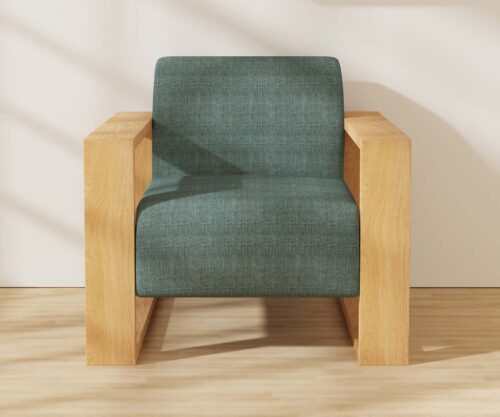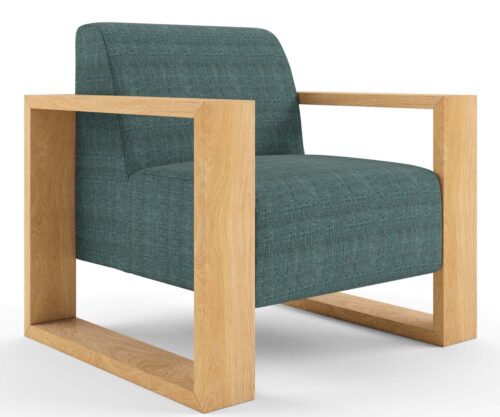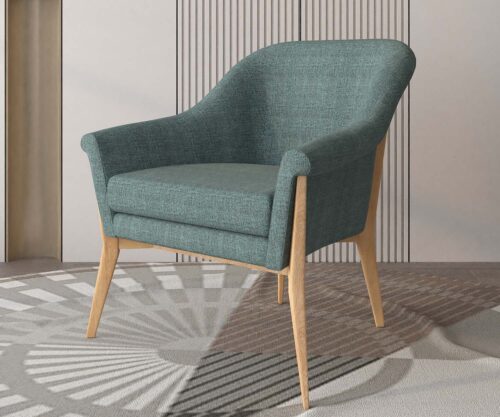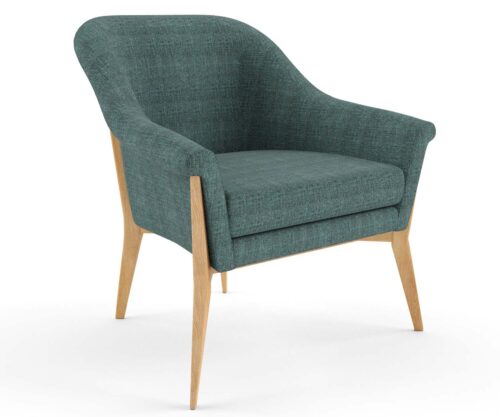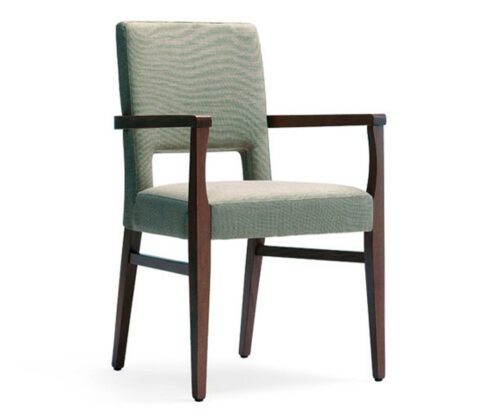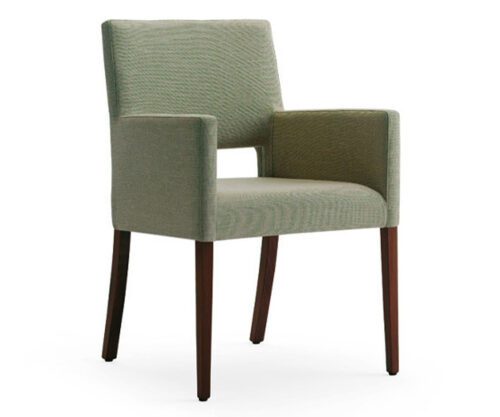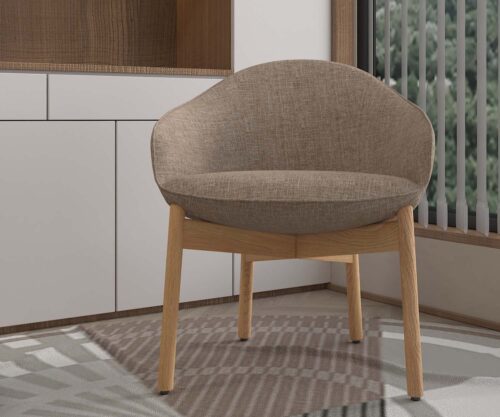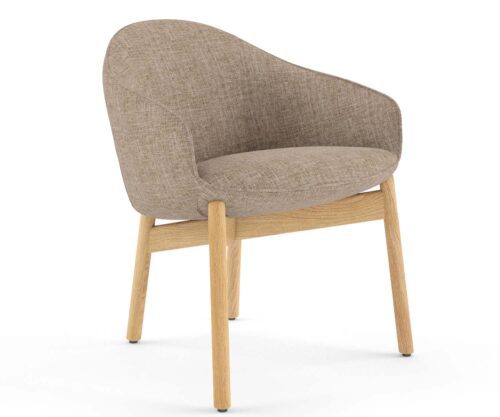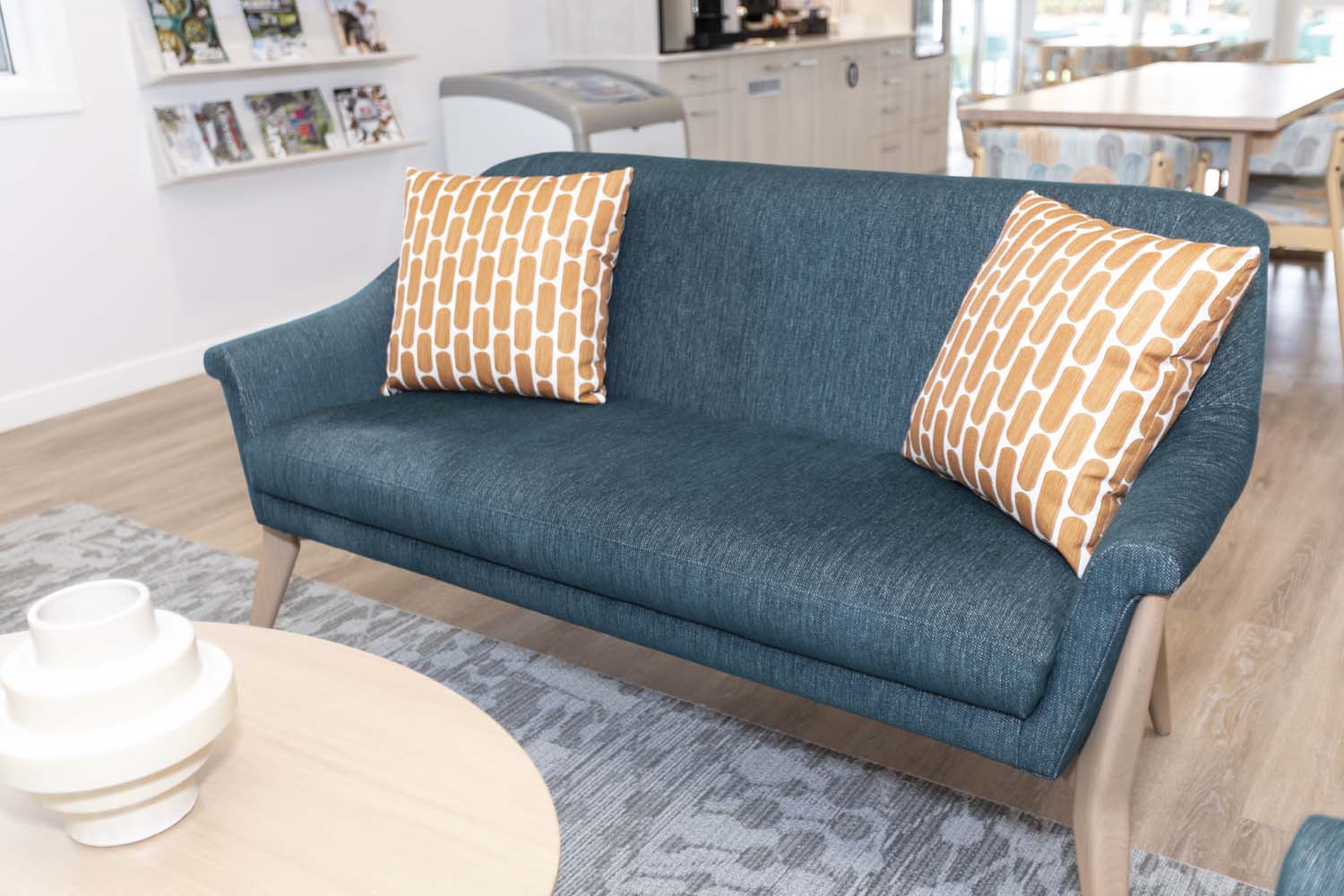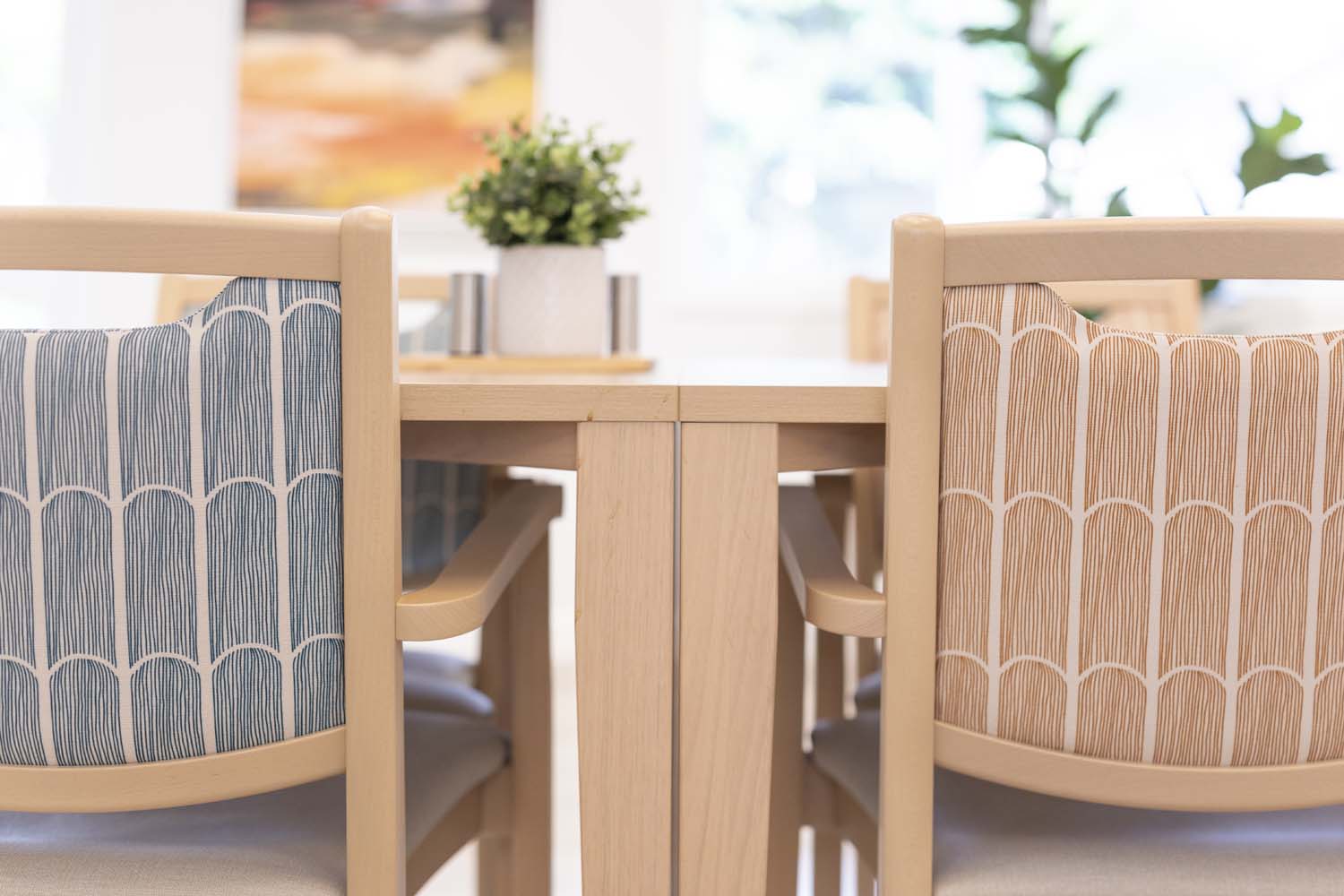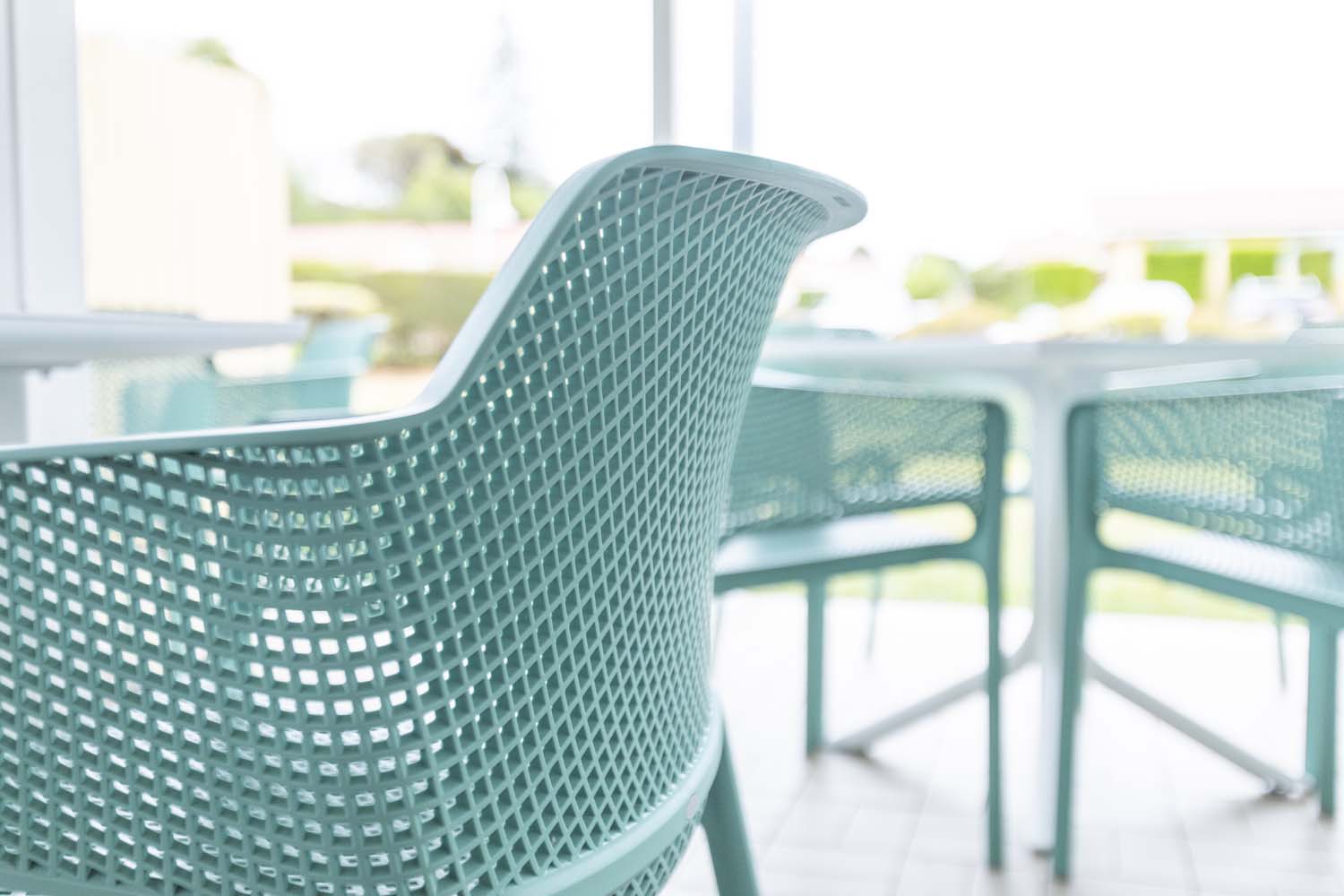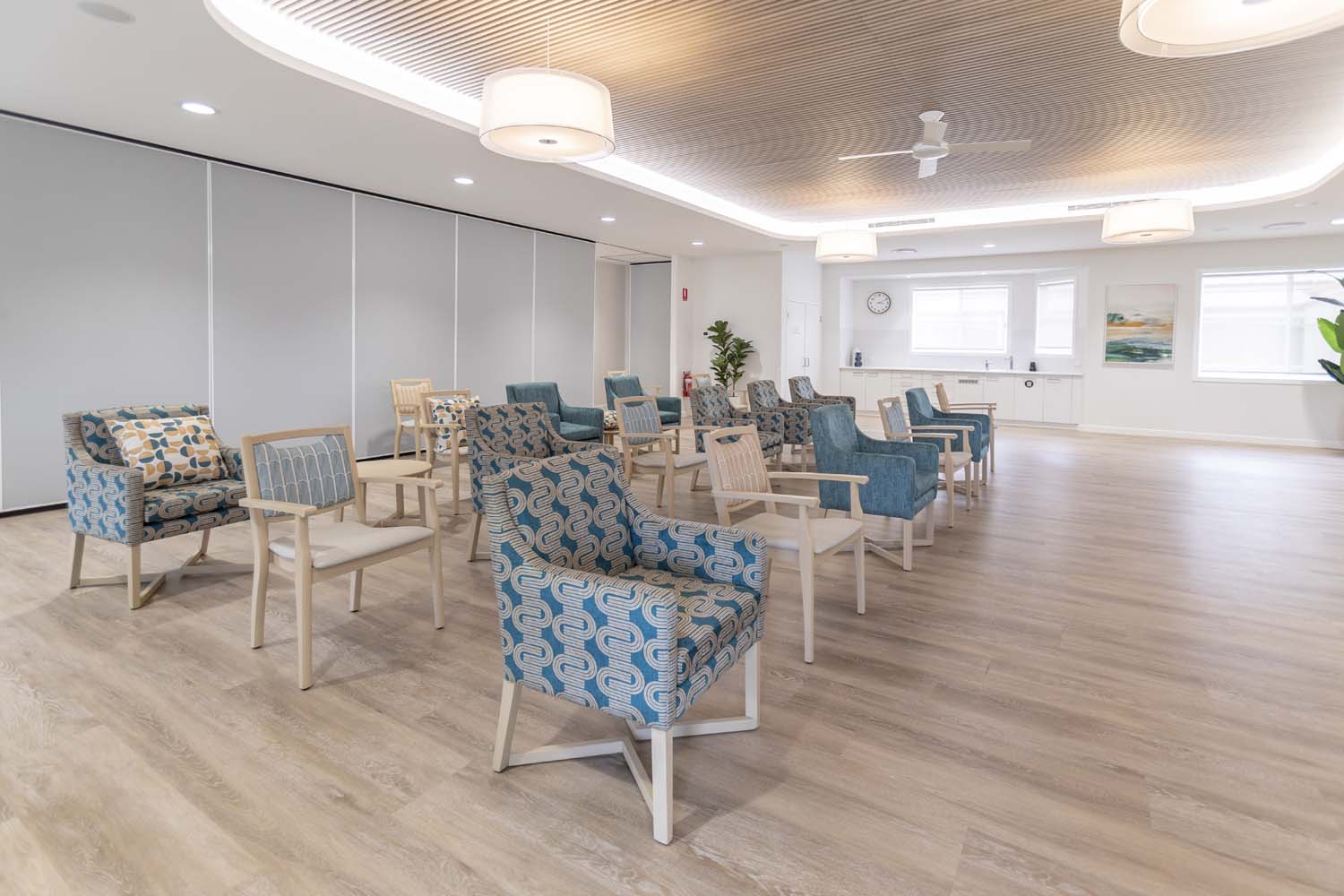Why Seat Height is Important When Choosing Armchairs for Aged Care Residents

Why is seat height so important when choosing armchairs for aged care residents?
Choosing suitably designed armchairs for aged care residents in Australia is a task with wide-reaching implications. It can significantly impact the health, independence, and comfort of elderly people living within aged care facilities.
There are many benefits for older people with reduced functional capacity when fit-for-purpose armchairs are chosen. Mobility and independence of elderly Australians can be maintained if they are able to get in and out of armchairs easily without asking for help.
Appropriately designed armchairs for elderly Australia encourage good posture, while reducing pain, fatigue, venous thrombosis risk and pressure sores. And finally, suitable aged care armchair design encourages elderly people to be more sociable, which improves their intake of food and drink.
However, if armchairs are not fit-for-purpose, elderly people must rely more on others, making them less independent. Poorly designed armchairs can also be simply uncomfortable. This discomfort can increase frustration and further exacerbate behavioral issues among elderly people who may have cognitive impairments.
Why is sit-to-stand transfer important for elderly people living in aged care facilities?
A crucial element of well-designed armchairs for aged care is seat height. It’s the seat height that most impacts how easy it is for aged care residents to stand from a seated position.
Simply put, armchairs with appropriate seat heights aid sit-to-stand transfers and are considered good, fit-for-purpose chair design for the aged care environment.
Sit-to-stand transfer, also known as chair-rise, is considered one of the most important measures of physical function and is the act of standing from a seated position. It’s something that we all do regularly throughout the day and the ability to do this is key to maintaining mobility and independence for elderly people.
Why is sit-to-stand transfer difficult for elderly Australians?
Up to 50% of elderly Australians have difficulty getting up from an armchair.
Rising from a seated position to a standing one is biomechanically challenging. It involves moving from a static, seated position to an unstable transition phase and then to a standing position. Successful transition requires significant motor control, momentum and coordination.
Without appropriate support, sit-to-stand transfers can result in falls if an individual has issues with balance. Sore or stiff hip joints and sore knee joints and arthritis can also inhibit safe transfer from a seated to a standing position.
How does appropriate armchair seat height help ease sit-to-stand transfers?
Choosing an armchair with an appropriate seat height can make the task of sit-to-stand transfers easier. A higher seat height reduces the motion, strength and exertion required by an elderly person to rise from an armchair. There’s less impact on hips and knees. This is particularly important if an elderly person has limited ability to flex their hips due to hip surgery or arthritis.
Armchairs with higher seats also reduce pressure on the pelvis as they distribute the pressure along the thighs.
Higher seat heights for aged care armchairs: the caveat
While higher seats on aged care armchairs are important for easing sit-to-stand transfers, not all elderly people are more comfortable using higher seats.
If a seat is too high, a person may not be able to touch the floor with their feet. This may reduce their stability while also increasing their venous thrombosis risk due to discomfort under the thighs and pressure behind the knee.
Footrests may provide a solution to this dilemma and may be an option for older people in office settings. However, they are not really feasible in aged care facilities where the footrests may become a trip hazard.
It’s not just seat height that’s important for sit-to-stand transfers
While seat height is the most important factor for aiding sit-to-stand transfers, there are other characteristics of aged care armchair design that should be considered. These include the seat size, the space underneath the seat, the angle of the seat and backrest, and whether the armchair has armrests.
Armrests should be designed to assist elderly people to stand without requiring assistance. Research from the Queensland University of Technology suggests that when armrests are available, they are used 100% of the time. Armrests are a vital tool in aiding sit-to-stand transfers, providing aged care residents with a way to stabilize themselves as they rise.
When seated, armrests also provide a sense of security and independence for elderly people because they know that when it comes time to stand up, they can do so without assistance.
When evaluating armrests for aged care seating, look for armrests that are easy to grip; not too wide and residents should easily be able to get their hands around them. Armrests should extend to the edge of the seat and should be lower at the back than the front.
Aged Care Armchairs should be fit-for-purpose, aiding sit-to-stand transfers
Providing fit-for-purpose armchairs that aid sit-to-stand transfers within the aged care environment is an issue of equity. Finding the right balance between seat height, depth, and armrests goes a long way toward providing comfortable and easy-to-use chairs. This is especially important for a larger portion of the aged care population.
FAQs for Choosing Armchairs for Aged Care Residents
Why is it crucial to choose well-designed armchairs for aged care residents?
Well-designed armchairs significantly impact the health, independence, and comfort of elderly individuals in aged care facilities.
How does seat height contribute to the design of armchairs for the elderly?
Seat height is crucial as it influences the ease with which aged care residents can transition from a seated to a standing position, addressing biomechanical challenges.
What role do footrests play in armchair design for the elderly?
Footrests may be considered in office settings but are generally not feasible in aged care facilities to avoid becoming a potential trip hazard.
Why is the balance between seat height, depth, and armrests important?
Achieving the right balance contributes to the comfort and ease of use of chairs for a larger portion of the aged care population.
Are there specific characteristics of armchair design besides seat height that should be considered?
Yes, other crucial factors include seat size, the space underneath the seat, the angle of the seat and backrest, and the presence of armrests.
How do poorly designed armchairs impact elderly residents with cognitive impairments?
Poorly designed armchairs can cause discomfort, leading to increased frustration and exacerbating behavioral issues in elderly residents with cognitive impairments.
Is customization an option when choosing armchairs for aged care residents?
Many manufacturers offer customization options to tailor armchair features, size, and upholstery to the specific needs and preferences of aged care residents.
How does the angle of the seat and backrest impact the comfort of armchairs for the elderly?
The angle influences the sitting posture and comfort, playing a role in addressing the unique needs of aged care residents.
Can choosing the right armchair positively impact the overall well-being of aged care residents?
Yes, by providing increased comfort, independence, and mobility, well-designed armchairs can positively impact the overall well-being and quality of life for elderly residents in aged care.
Fit-for-purpose armchairs – designed to assist aged care residents to stand from a seated position
More News
Why Seat Height is Important When Choosing Armchairs for Aged Care Residents

Why is seat height so important when choosing armchairs for aged care residents?
Choosing suitably designed armchairs for aged care residents in Australia is a task with wide-reaching implications. It can significantly impact the health, independence, and comfort of elderly people living within aged care facilities.
There are many benefits for older people with reduced functional capacity when fit-for-purpose armchairs are chosen. Mobility and independence of elderly Australians can be maintained if they are able to get in and out of armchairs easily without asking for help.
Appropriately designed armchairs for elderly Australia encourage good posture, while reducing pain, fatigue, venous thrombosis risk and pressure sores. And finally, suitable aged care armchair design encourages elderly people to be more sociable, which improves their intake of food and drink.
However, if armchairs are not fit-for-purpose, elderly people must rely more on others, making them less independent. Poorly designed armchairs can also be simply uncomfortable. This discomfort can increase frustration and further exacerbate behavioral issues among elderly people who may have cognitive impairments.
Why is sit-to-stand transfer important for elderly people living in aged care facilities?
A crucial element of well-designed armchairs for aged care is seat height. It’s the seat height that most impacts how easy it is for aged care residents to stand from a seated position.
Simply put, armchairs with appropriate seat heights aid sit-to-stand transfers and are considered good, fit-for-purpose chair design for the aged care environment.
Sit-to-stand transfer, also known as chair-rise, is considered one of the most important measures of physical function and is the act of standing from a seated position. It’s something that we all do regularly throughout the day and the ability to do this is key to maintaining mobility and independence for elderly people.
Why is sit-to-stand transfer difficult for elderly Australians?
Up to 50% of elderly Australians have difficulty getting up from an armchair.
Rising from a seated position to a standing one is biomechanically challenging. It involves moving from a static, seated position to an unstable transition phase and then to a standing position. Successful transition requires significant motor control, momentum and coordination.
Without appropriate support, sit-to-stand transfers can result in falls if an individual has issues with balance. Sore or stiff hip joints and sore knee joints and arthritis can also inhibit safe transfer from a seated to a standing position.
How does appropriate armchair seat height help ease sit-to-stand transfers?
Choosing an armchair with an appropriate seat height can make the task of sit-to-stand transfers easier. A higher seat height reduces the motion, strength and exertion required by an elderly person to rise from an armchair. There’s less impact on hips and knees. This is particularly important if an elderly person has limited ability to flex their hips due to hip surgery or arthritis.
Armchairs with higher seats also reduce pressure on the pelvis as they distribute the pressure along the thighs.
Higher seat heights for aged care armchairs: the caveat
While higher seats on aged care armchairs are important for easing sit-to-stand transfers, not all elderly people are more comfortable using higher seats.
If a seat is too high, a person may not be able to touch the floor with their feet. This may reduce their stability while also increasing their venous thrombosis risk due to discomfort under the thighs and pressure behind the knee.
Footrests may provide a solution to this dilemma and may be an option for older people in office settings. However, they are not really feasible in aged care facilities where the footrests may become a trip hazard.
It’s not just seat height that’s important for sit-to-stand transfers
While seat height is the most important factor for aiding sit-to-stand transfers, there are other characteristics of aged care armchair design that should be considered. These include the seat size, the space underneath the seat, the angle of the seat and backrest, and whether the armchair has armrests.
Armrests should be designed to assist elderly people to stand without requiring assistance. Research from the Queensland University of Technology suggests that when armrests are available, they are used 100% of the time. Armrests are a vital tool in aiding sit-to-stand transfers, providing aged care residents with a way to stabilize themselves as they rise.
When seated, armrests also provide a sense of security and independence for elderly people because they know that when it comes time to stand up, they can do so without assistance.
When evaluating armrests for aged care seating, look for armrests that are easy to grip; not too wide and residents should easily be able to get their hands around them. Armrests should extend to the edge of the seat and should be lower at the back than the front.
Aged Care Armchairs should be fit-for-purpose, aiding sit-to-stand transfers
Providing fit-for-purpose armchairs that aid sit-to-stand transfers within the aged care environment is an issue of equity. Finding the right balance between seat height, depth, and armrests goes a long way toward providing comfortable and easy-to-use chairs. This is especially important for a larger portion of the aged care population.
FAQs for Choosing Armchairs for Aged Care Residents
Why is it crucial to choose well-designed armchairs for aged care residents?
Well-designed armchairs significantly impact the health, independence, and comfort of elderly individuals in aged care facilities.
How does seat height contribute to the design of armchairs for the elderly?
Seat height is crucial as it influences the ease with which aged care residents can transition from a seated to a standing position, addressing biomechanical challenges.
What role do footrests play in armchair design for the elderly?
Footrests may be considered in office settings but are generally not feasible in aged care facilities to avoid becoming a potential trip hazard.
Why is the balance between seat height, depth, and armrests important?
Achieving the right balance contributes to the comfort and ease of use of chairs for a larger portion of the aged care population.
Are there specific characteristics of armchair design besides seat height that should be considered?
Yes, other crucial factors include seat size, the space underneath the seat, the angle of the seat and backrest, and the presence of armrests.
How do poorly designed armchairs impact elderly residents with cognitive impairments?
Poorly designed armchairs can cause discomfort, leading to increased frustration and exacerbating behavioral issues in elderly residents with cognitive impairments.
Is customization an option when choosing armchairs for aged care residents?
Many manufacturers offer customization options to tailor armchair features, size, and upholstery to the specific needs and preferences of aged care residents.
How does the angle of the seat and backrest impact the comfort of armchairs for the elderly?
The angle influences the sitting posture and comfort, playing a role in addressing the unique needs of aged care residents.
Can choosing the right armchair positively impact the overall well-being of aged care residents?
Yes, by providing increased comfort, independence, and mobility, well-designed armchairs can positively impact the overall well-being and quality of life for elderly residents in aged care.
Fit-for-purpose armchairs – designed to assist aged care residents to stand from a seated position
Commercial furniture by room
Based in Brisbane, we’re an Australian manufacturer of aged care furniture, retirement living furniture, hospital & healthcare furniture, hotel & accommodation furniture and student accommodation furniture. We also supply a range of commercial office furniture.
Discover the FHG Look Book: Your Source of Inspiration for Quality Australian-Made Commercial Furniture
- Quality Craftsmanship: See why we’ve been a trusted partner for over 25 years.
- Local Excellence: Learn how our Brisbane team ensures the highest standards.
- Inspiration and Ideas: Find innovative furniture solutions for any environment.
Don’t miss the opportunity to transform your commercial space with FHG’s expertly crafted furniture. Download the FHG Look Book today and start your journey towards exceptional design and quality.

